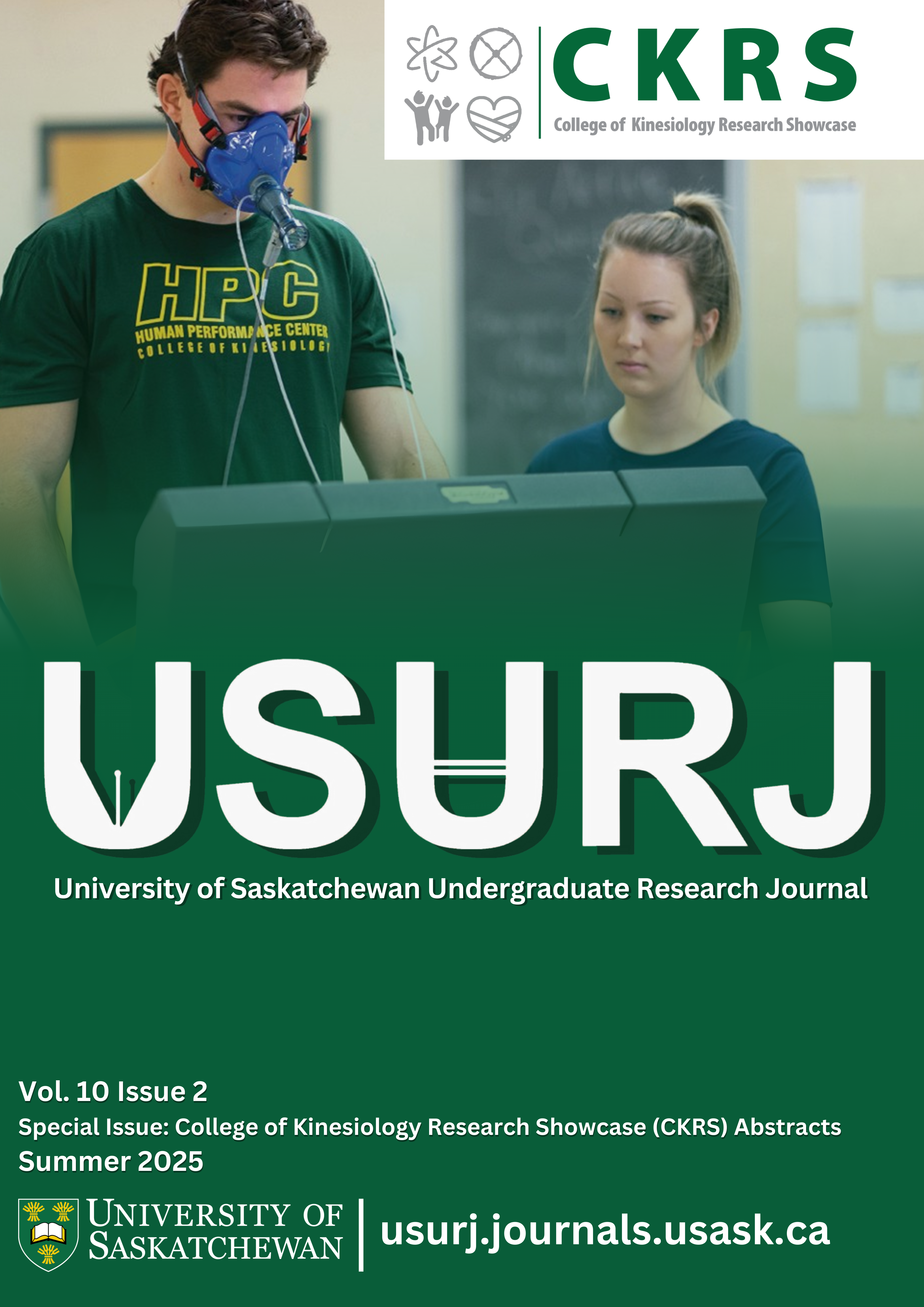Evaluation of a Novel Push Task for Shoulder Function Assessment in Breast Cancer Survivors After Reconstructive Surgery
Main Article Content
Abstract
College of Kinesiology Research Theme: Human Performance
On average, over 80 Canadian women are diagnosed with breast cancer every day. Treatment is often followed by reconstructive surgeries, which can lead to longer-term musculoskeletal issues. Research has shown that survivors elicit unique upper body muscle activations and kinematics. Typically, ergonomics-related functional tasks are used to assess women who have undergone reconstructive surgery, but lifting is often the only loaded task. A novel functional push task has been developed by the authors, and this study aimed to evaluate this task in comparison to a standard overhead lift in breast cancer survivors. Ten women (Age: 35-68 years), who had previously undergone breast reconstruction surgery more than six months ago and experienced no shoulder pain, were analyzed from a larger dataset. Participants completed a Work-Related and Functional Tasks protocol, which included the standard overhead lift task and the novel horizontal push task from a seated position. Electromyography (EMG) data from the infraspinatus and pectoralis major muscles were recorded from both the dominant and non-dominant arms, along with 3D kinematics of the humerus. Applied force from the push was recorded using a handheld dynamometer. EMG expressed as a percent of maximum voluntary contraction was calculated along with the co-contraction index (CCI) between the muscles. Humeral elevation and rotation were calculated. CCI, EMG and humeral rotation were compared between the lift and push at similar elevation levels using a repeated measures ANOVA with task and arm as factors. The relationships between the variables and load were explored with correlations. Humeral rotation was found to be significantly different (p<0.05) between the tasks, with more internal rotation in the push. CCI were similar between tasks, but absolute muscle activity for both muscles was significantly higher (p<0.05) in the lift task. No between-arm (dominance) effects were observed. CCI, EMG and kinematics were not correlated with load in either the push or the lift tasks. This exploratory study found that the addition of the loaded push task could be valuable, as it resulted in different kinematic and muscle activation patterns in comparison to the lift. Future work will include other breast cancer survivors who do experience pain and comparisons between participants with different surgery types.
Downloads
Article Details
Section
Articles: USURJ’s current Publication Agreements apply a Creative Commons Attribution-NonCommercial License (CC-BY-NC) by default. The CC BY-NC license lets others remix, tweak, and build upon work non-commercially. The author(s) can choose a different CC license, as outlined in https://creativecommons.org/about/cclicenses/. Please see the PDF for each article to determine what license is applied to that article. Author(s) can also request to reserve all copyright (All Rights Reserved). If there is no indication for articles published before September 2020, assume the author retains all rights beyond those necessary for publication by USURJ. All articles published after September 2020 will apply one of the aforementioned CC licenses. See the Publication Agreement under the Submission Preparation Checklist or Author Guidelines for more information. Artwork: All copyright for the original artwork remains with the artist unless they wish to apply a Creative Commons (CC) license to the artwork. Please see the PDF for each artwork to determine what license is applied to that artwork.
